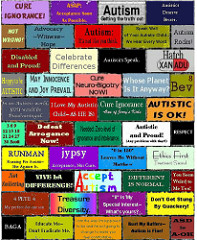I’ve been teaching for 13 years, and have run into just about every conceivable technical glitch imaginable. Consequently, I’ve gotten picky over the years. I like machinery and environments that actually work!
VISUAL
Video projection problems generally fall within two categories: light intensity (lumens) and viewing angles. The projected image must be bright enough to compete with ambient room light, and must also not be compromised or blocked by either the angle of projection or the viewing angle of the audience.
To be able to effectively compete with any other light in the room, a video projector needs to put out 2000 lumens. (Watch out for those pictures in advertising brochures with their nicely sharp, color-saturated false images, because they don’t really reflect how the light reflects off the projection screen in real life.) It’s a false economy to buy equipment that doesn’t provide enough “muscle” to adequately serve the people using it.
When the image is from a projector that is bouncing the light off a screen (generally overhead transparency projectors, opaque projectors, slide projectors, filmstrip projectors and LCD projectors) there is a certain amount of loss of light intensity between the projector and the screen. There is also a lot of competition between the brightness of the image and the ambient amount of light in the room. Either we try to darken the room completely so the projection doesn’t get all washed out, or we try to leave some lights on for other simultaneous activities. This is problematic for teachers who expect their students to be able to take notes while also being able to see the projected image. Residual lighting in the room must be arranged so it is not shining or reflecting onto the projection screen. Unfortunately, lighting controls are rarely designed to accommodate this situation, despite the fact that projectors are often used in classrooms, and have been in use for half a century!
An alternative is an image from a projector that is mounted behind a translucent screen, or from a big monitor or plasma screen. In these cases, the projected image is emitting the light to the audience, so it’s less washed-out. Note that with rear projection, there will also have to be equipment modifications because the image has to be vertically flipped, meaning reversed left and right, or else everything will be backwards. There are but a limited number of students that can read backwards text, although they would derive great pleasure at being able to demonstrate such a rare and obscure skill.
Beware of using an ordinary television monitor, because any text (such as captions) on a standard 27” television screen will not be legible beyond a certain distance! Actually, this problem applies to all screens; text that is 1 inch (about 2.5 cm) is only legible for maybe 30 feet (9 meters). Frankly, that’s a bit difficult to read at that distance. Naturally, the larger the text is, the less text overall that can be put on a screen. And then, we have to be able to physically see all the text …
Unless you only work with preschool children who are sitting on the floor, projection screens need to be 5-6 feet off the ground, otherwise people’s bodies will block the view of the bottom of the screen to those in the middle and back.
Also, a ceiling-mounted projector should not be so low as to block the view of the top of the screen. It’s not always that the projector itself hangs too low from the ceiling, but rather the screen is so low that the image is partially blocked by people or objects!
In turn, the students should not sit more than 30-45° from the centerline of the screen, or else their viewing is compromised due to blurring and distortion from viewing angle. Please don’t try to squeeze two or three classrooms of children into one classroom, with the students crammed all the way to the walls. Go ahead and take everyone to the auditorium where there is a screen and seating more suitable to the program.
When placing projectors on a floor cart, the projection size must match the required magnification size, as well as the projection screen size for the students in the back, and don’t forget, the presence of the projector cart must not break fire codes for the student aisles. How do you do that? You make the aisles wider! Besides, you really don’t want someone sitting right next to the projector, because the machinery noise will reduce their ability to hear the program.
Overhead projectors can be problematic because if they are near the front for the teacher to change images or to write on them, then when the head is angled upwards to project high enough for the back of the audience there is often a “keystone” effect. Keystoning is when the projected image is wider at the top than at the bottom, and this is problematic because the words become distorted and blurry and thus difficult to read.
It’s not enough to stand in the center aisle by the back row and look at a screen and say, “Oh yeah, I can see everything okay.” Rather, sit in the back row at a corner, behind people and see if you can see all of the screen, and likewise can read the text without straining. Then sit in the front row at the other corner of the seating area and check to see if there is much text distortion from that position as well.
AUDIO
Audio projection problems often result not from the speaker’s ability, but from background noise. We can refer to the simple Shannon-Weaver model of communication which describes the communication between people as the “signal” between the sender and receiver, and the background problems that interfere with that as the “noise”.
Background noise from HVAC systems (Heating, Ventilation & Air Conditioning), fluorescent lighting, and projection systems all figure into the noise-to-signal ratio. So do ordinary human sounds of paper shuffling, binder snapping, dropping things, pencil sharpening, pen scratching, crayon rumbling, people talking, muttering to themselves, whispering between each other, laughing, coughing, clearing their throats, eating, chewing gum, walking around, opening doors, their shoes squeaking, chairs scraping and so on. Then there’s the exciting outdoor world, including playground equipment, cars with booming bass, or even a work crew putting on fresh roofing tar on the school building.
The amount of background noise must be low enough that the signal (speech from the teacher and the other students) is intelligible without spending lots of mental energy straining to hear, decode, and process what is being said.
An adult who is conversing in their native language about a familiar topic has the skills to “fill in” periodic blips in the intelligibility of the conversation if the talking is 6 dB louder than the background noises. (Explanations of dB and Hz and how they relate to human hearing are below.)
However, children don’t have that high level of practice. Students don’t have the high level of background familiarity with the topics they are being instructed in (they are, after all, learning). People for whom English is not their first language don’t have the ease of decoding. Students with ear infections, hearing impairments or auditory processing difficulties will likewise not be able to manage, or consistently manage, at that level. A deficit is not the only way to have a problem – a student with acute hearing may perceive a greater range and volume of background noise than others, and students with attention problems will also find the environment difficult due to all the distractions. They all will need a 25 dB difference between signal and noise.
If people are having to strain to hear the words, they have less brainpower to devote to understanding the words, and less brainpower to devote to thinking about the concepts being discussed, and less brainpower to devote to remembering what is being discussed.
When rooms have the HVAC fans located within the room (instead of elsewhere in the building), such as window air conditioning units or equipment set in cabinets underneath the windows, then those fans are adding extra background noise. In-room ventilation is cheaper, but “cheaper” in this case only reflects the builder’s costs, not the cost to the people who are trying to use the room with varying levels of success.
A teacher who is talking while facing away from the audience, such as when writing on a board, is going to be difficult to hear. Imagine being seated between a thrumming window air conditioner and an LCD projector with its accompanying computer, both of which are emitting high-pitch whines. The student behind you is chewing gum with their mouth open, and another scratching out notes. Meanwhile, the teacher has turned away and is wrestling with the projection screen and says:
“The exam mumbleday is going to cover –“ tug, ziiiip, tug, rattle, ziiip, tug, clunk “—and page fiftee-.”
When’s the exam? What and page fifteen? Or was that something and page fifty; the two numbers sound very similar …
It’s easy to dismiss the problem and say that students can simply ask for clarification. But neither the teachers nor the students (or even the rest of the classmates) will tolerate frequent requests for clarification. Many students are unwilling to “bother” the teacher, or don’t want to attract attention to their selves. It’s also not helpful to wait until the end of class, for a variety of reasons. There’s the simple logistical problem that stopping to ask the teacher several questions makes it hard to get to the next class on time (then the student would be considered chronically tardy as well as inattentive). More importantly, it’s hard to remember everything that was unclear, and much worse, the content of a class depends upon being able to understand things in a sequence – lose parts of that sequence, and the flow of concepts or the steps in a process fall apart.
That teacher who is facing away from the students is also impossible to watch for those who actively (or unconsciously) lip-read. Although it is possible to equip the teacher with a microphone, this doesn’t help the students to hear each other. Worse, most speakers are designed to amplify music, not human voices. The range of tones for speech is narrower than for music, the range of comfortable volume is narrower than for music, and in contrast, the level of clarity for understanding speech is greater than that for music. If the clarity is not there, then amplification will not help – louder garble is still garble.
With the exceptions of students who need the more focused auditory input of an infrared system, or the echoic dynamics of a large lecture hall or auditorium, we don’t need to amplify the speaker, or blame the student for not trying hard enough – we really need to quiet the background noise.
* Explanations of dB and Hz and how they relate to human hearing:
Loudness is measured in decibels (dB): a whisper is about 20 dB, and a loud concert is 80-120 dB. Sounds over 80 dB for a few hours’ time can cause hearing loss, although the pain threshold is above that level, at 120-140 dB, so pain is not a good measure of danger to one’s hearing.
The tone or pitch of a sound is measured in Hertz (Hz; which is the number of sound waves per second): a low bass note is about 50 Hz
Human hearing is tested in a couple of different parameters; the tone (pitch) and the loudness. The normal speech range for humans is 250 – 1,000 Hz (Hertz). A tone of 250 Hz is a man’s low-pitched voice, and 1,000 Hz is a woman’s high-pitched voice. Good human hearing is 20 Hz to 20,000 Hz ( = 20 kHz, 20 kilohertz).
It’s interesting to note that a regular hearing exam only tests within the 125 – 8,000 Hz range, so a person can pass a hearing exam and still not have a full range of hearing up to 20 kHz. Normal hearing is considered to be in a range of 0 to just 20 dB of hearing loss. Mild hearing loss is 20-40 dB, moderate hearing loss is 40-60 dB, severe hearing loss is 60 to 80 dB, and profound hearing loss is 80 dB HL or more.









